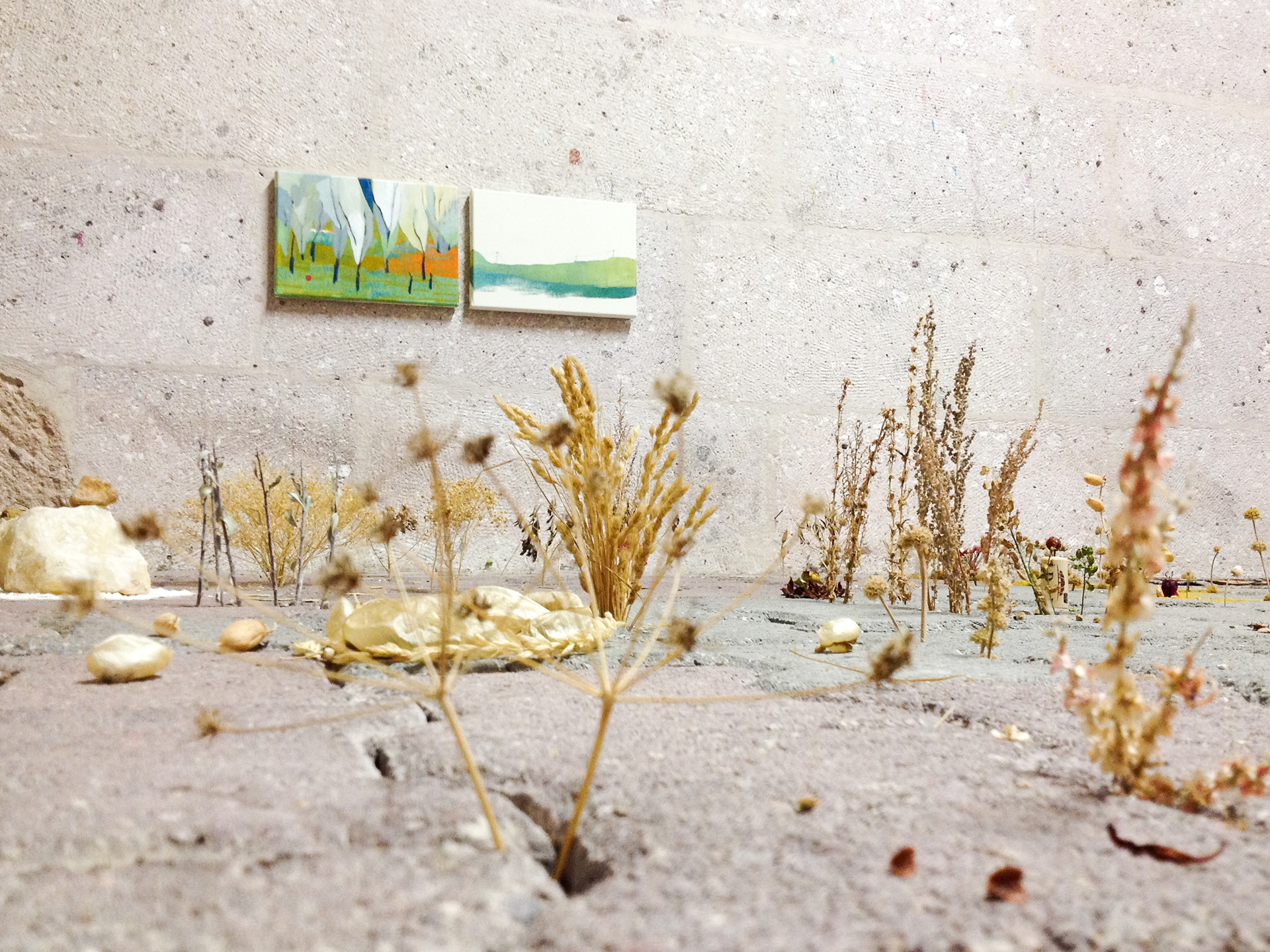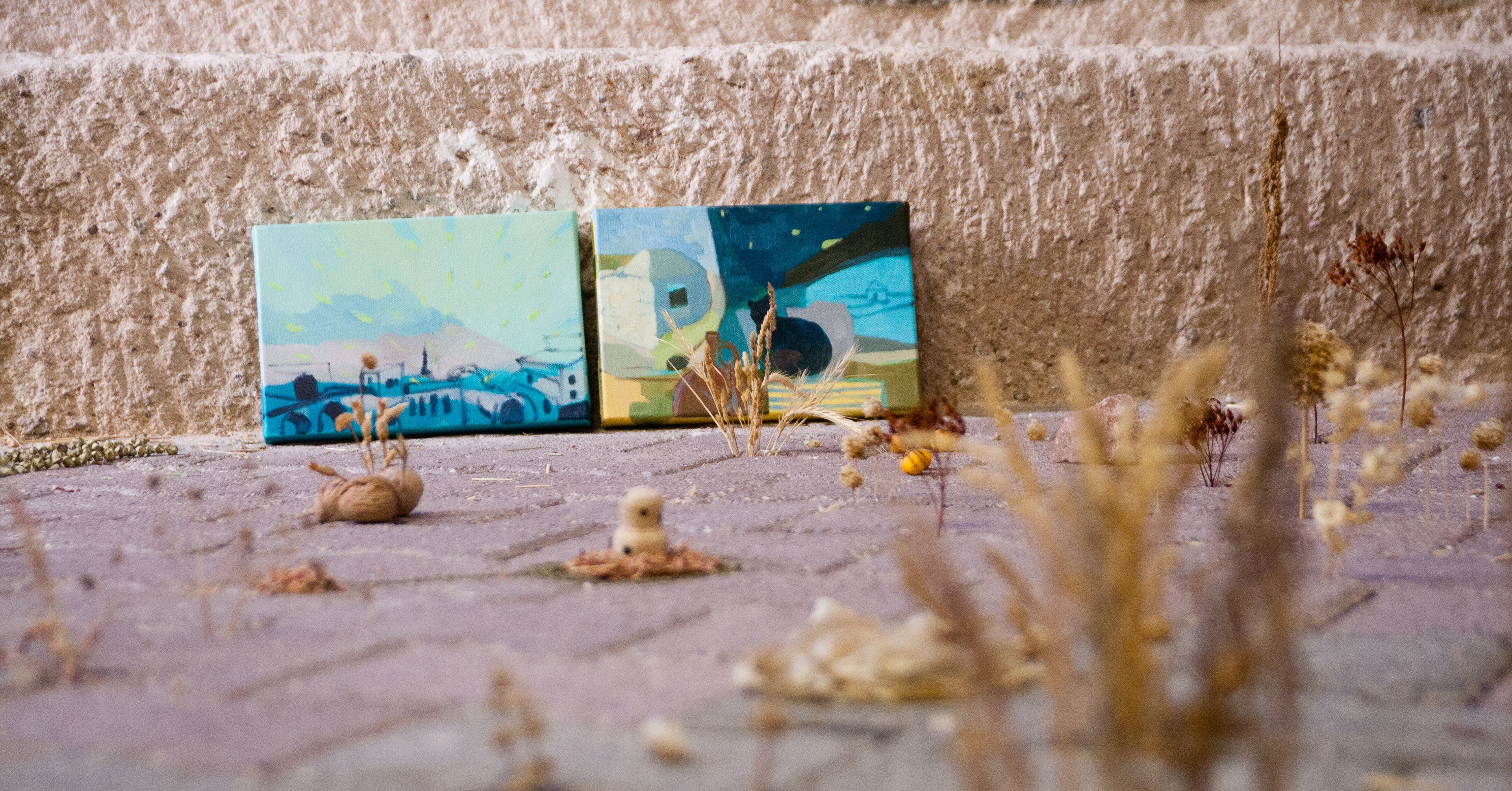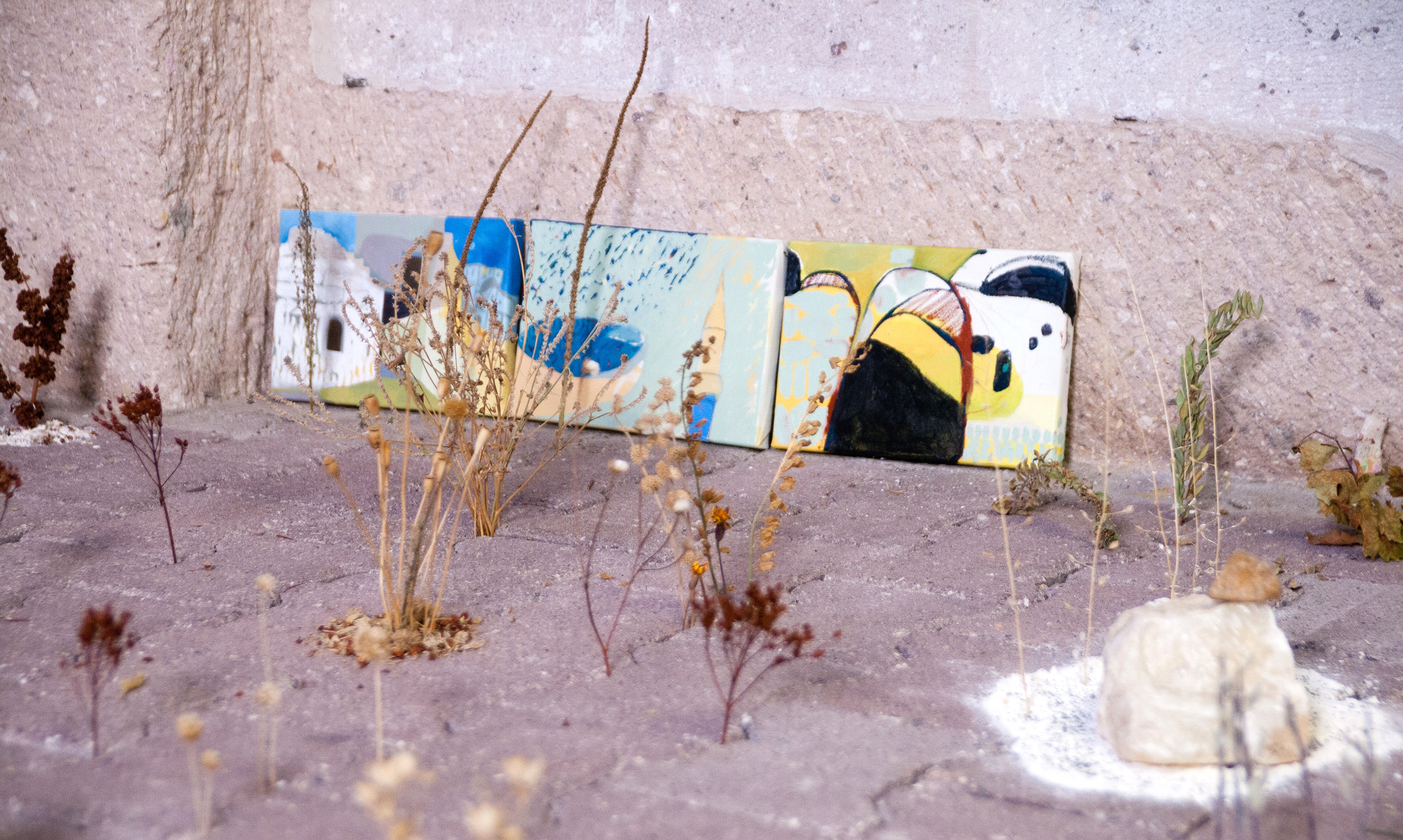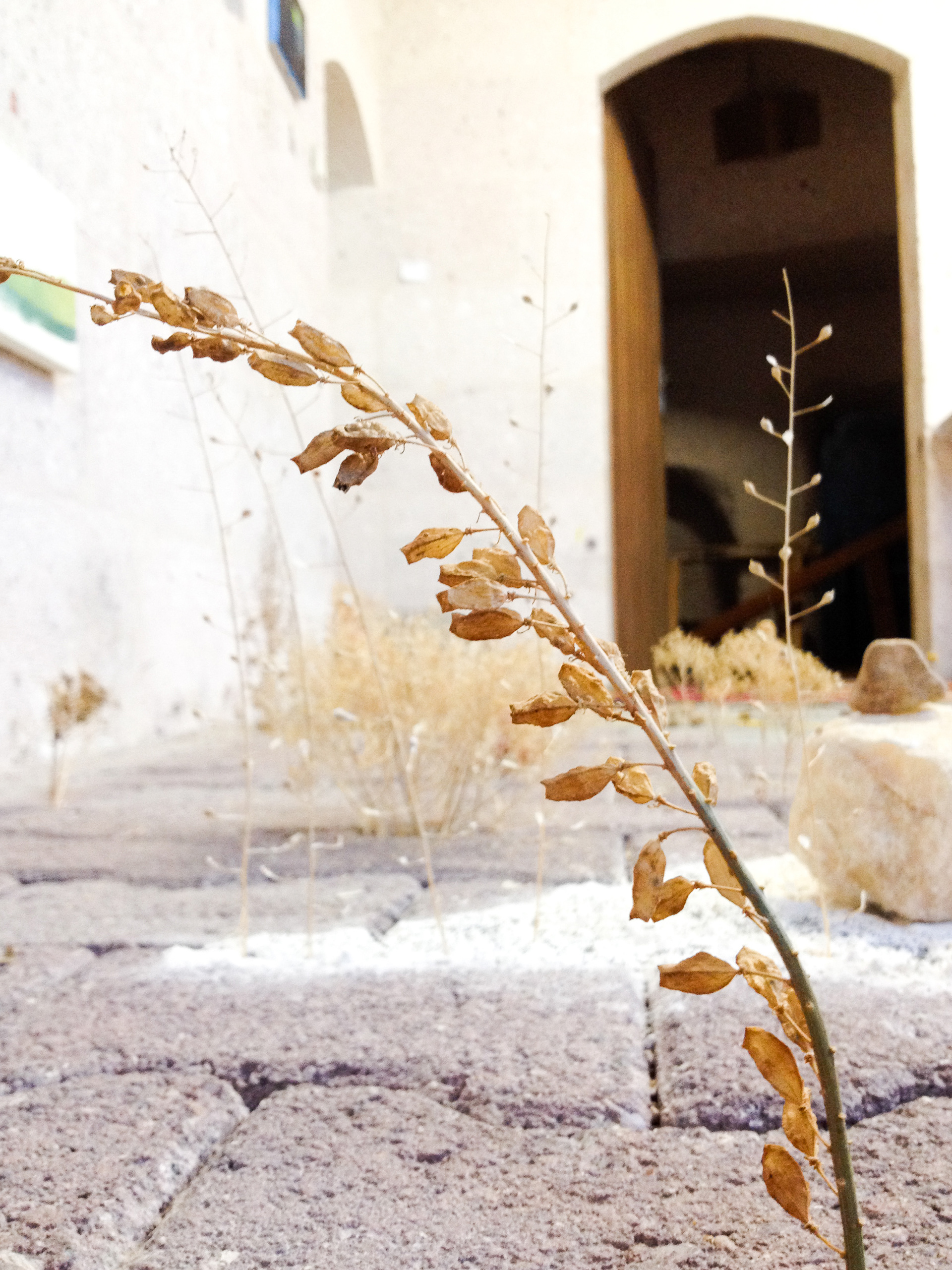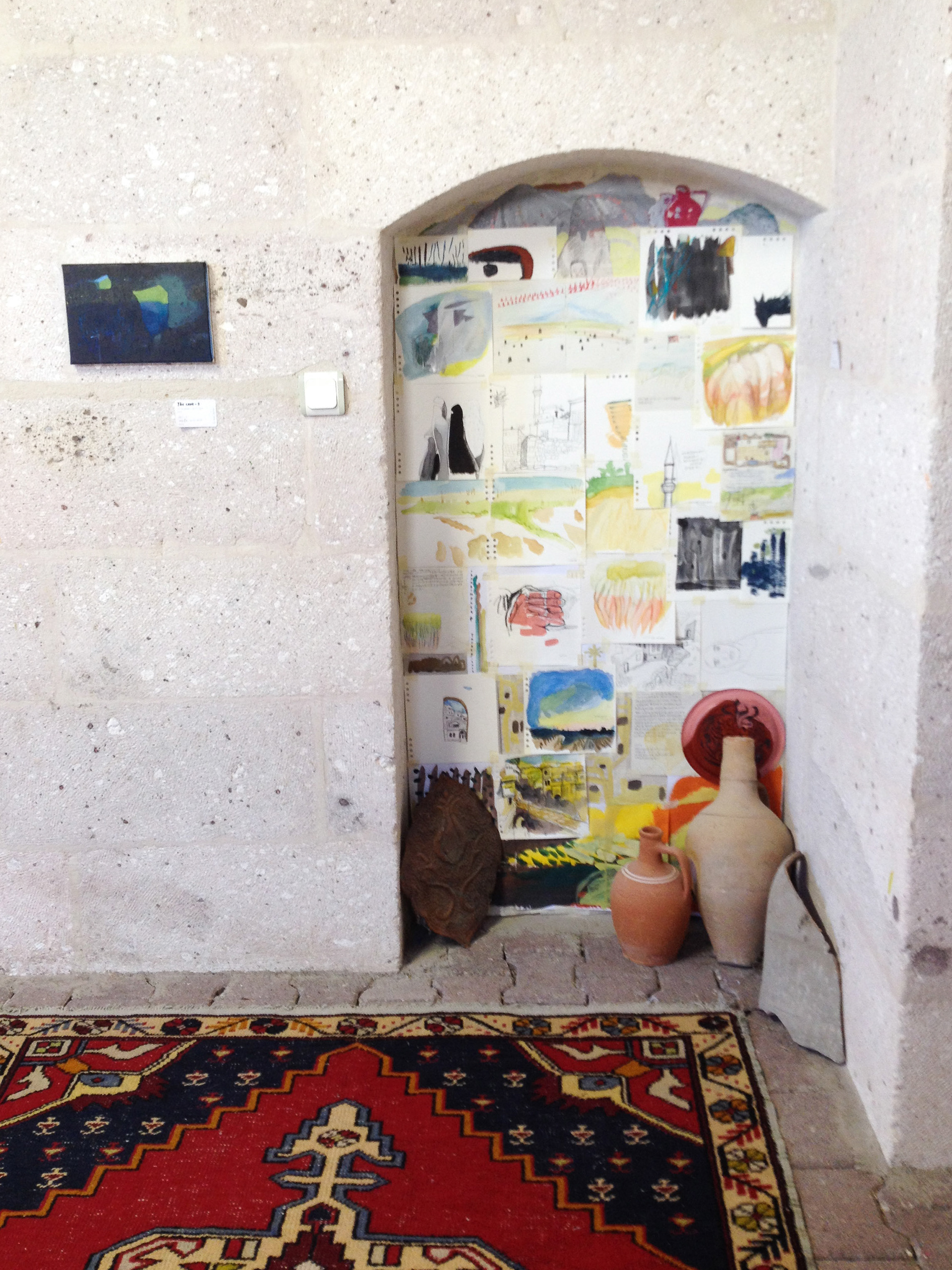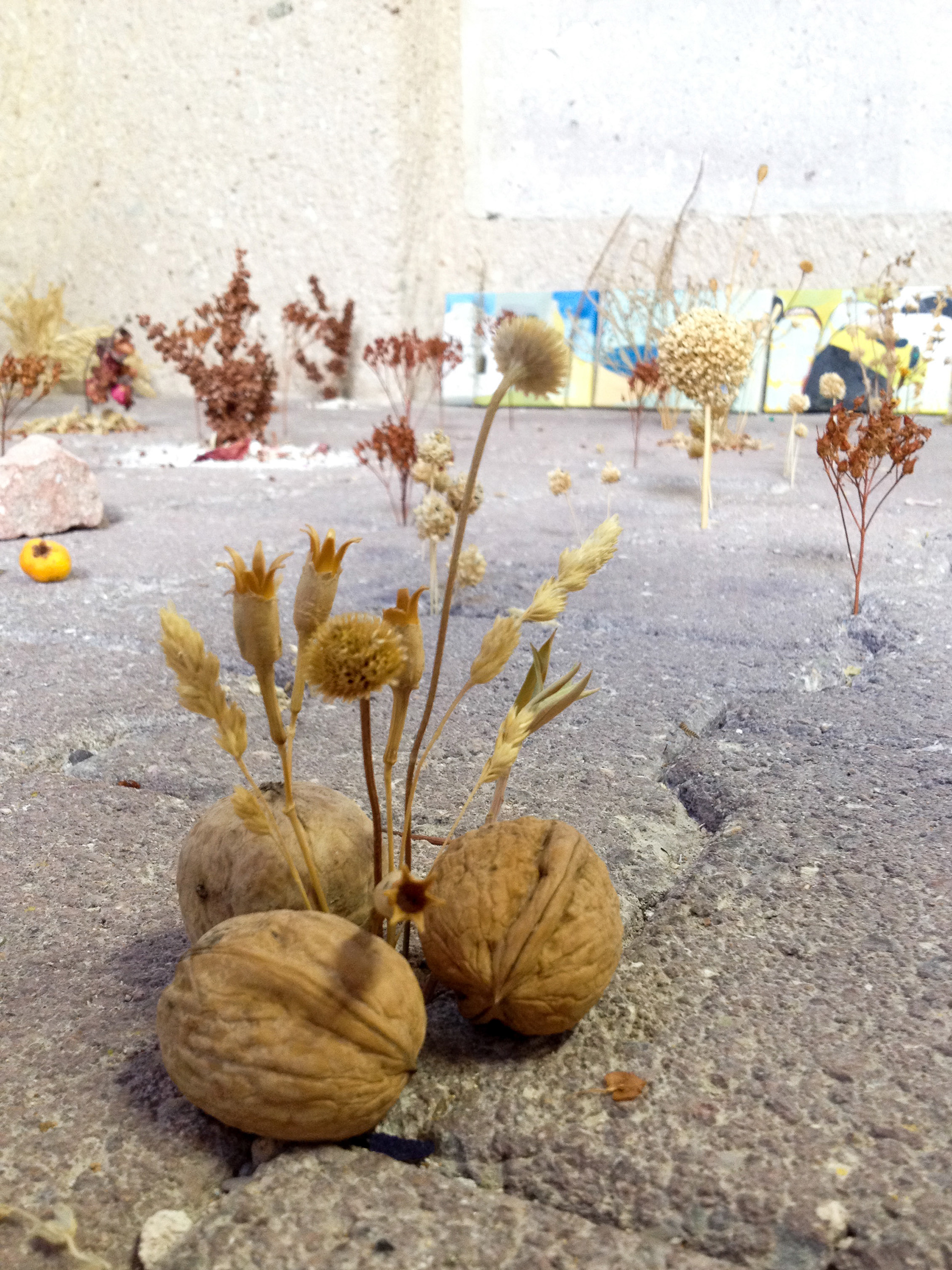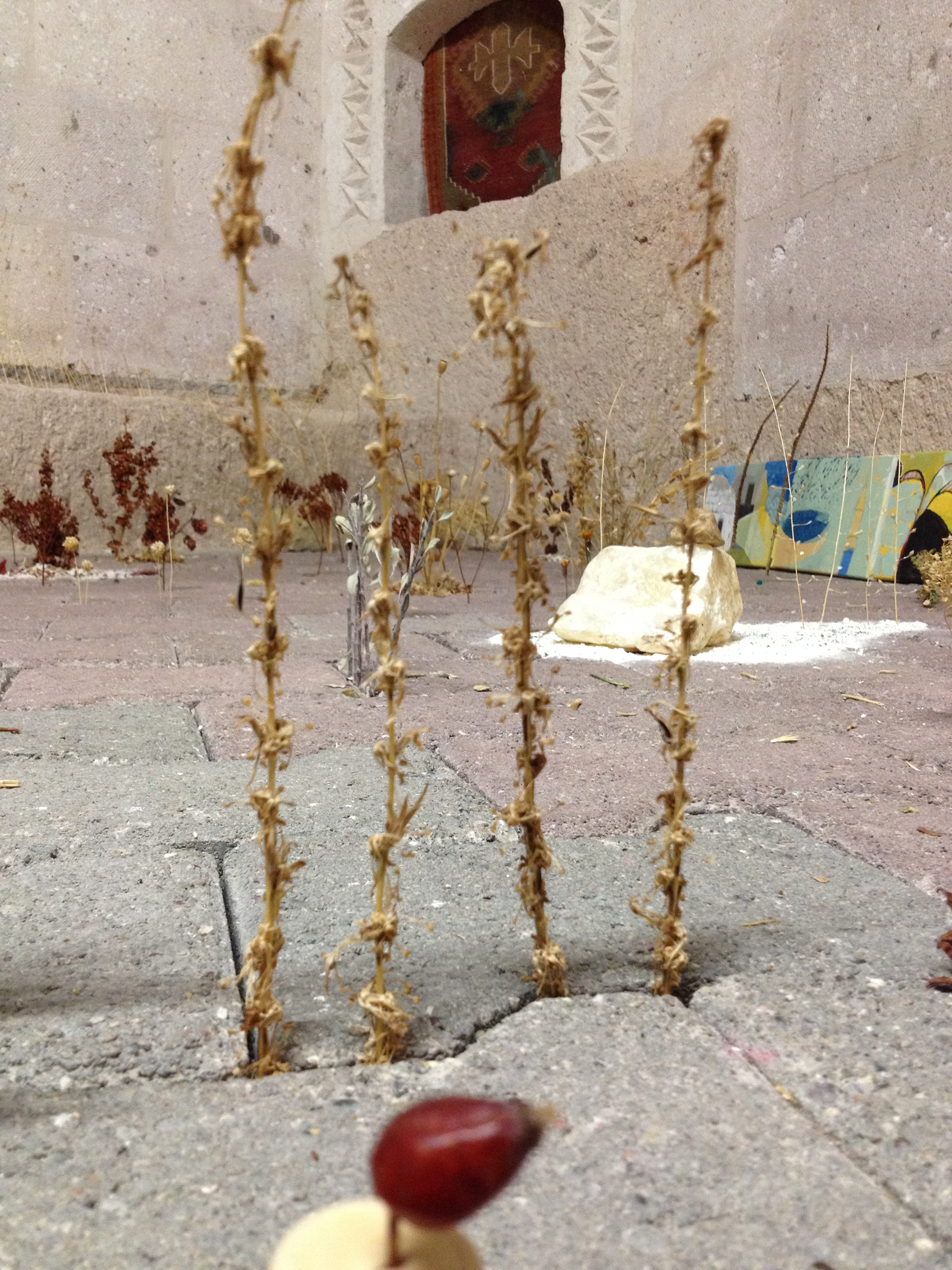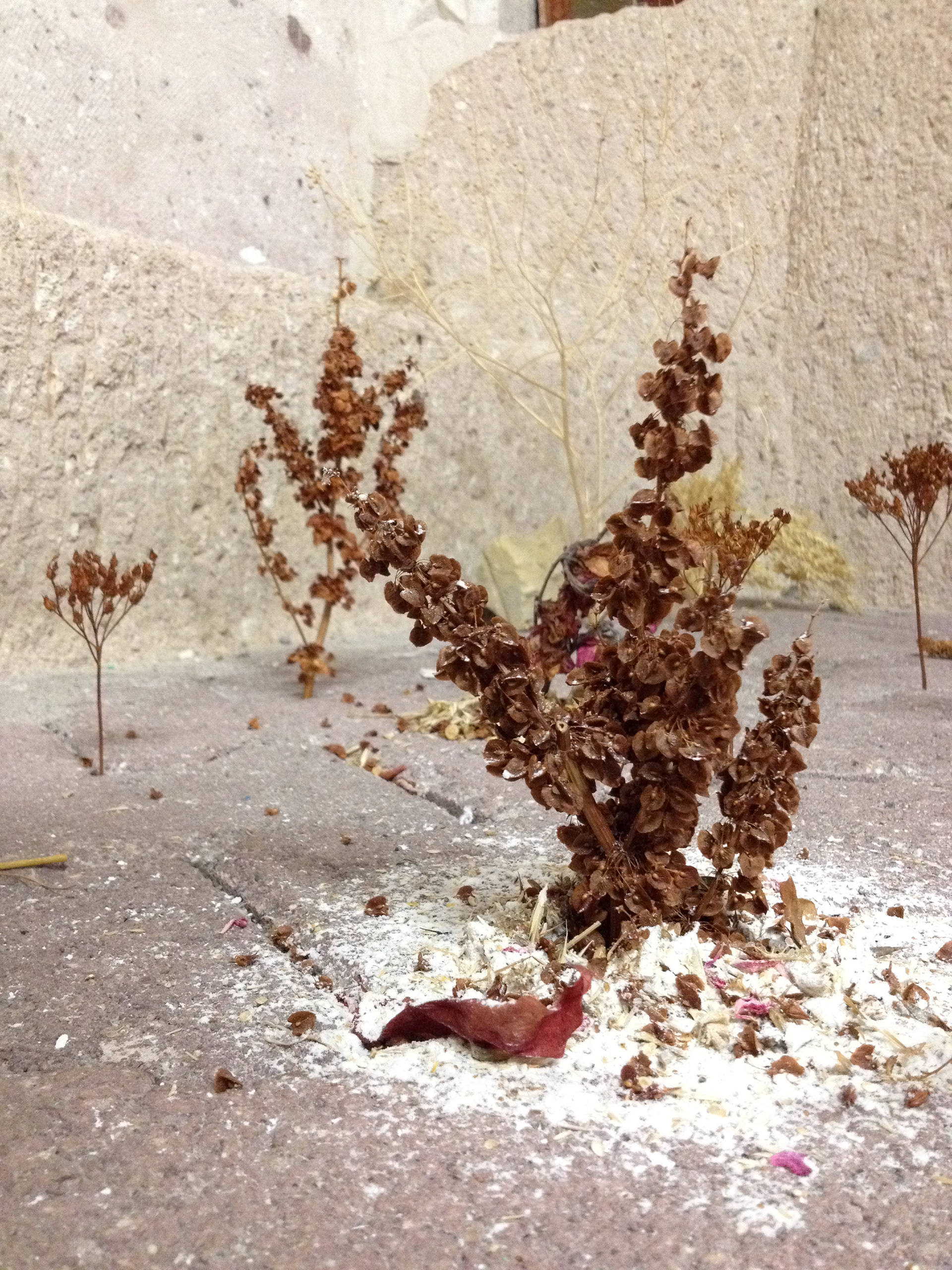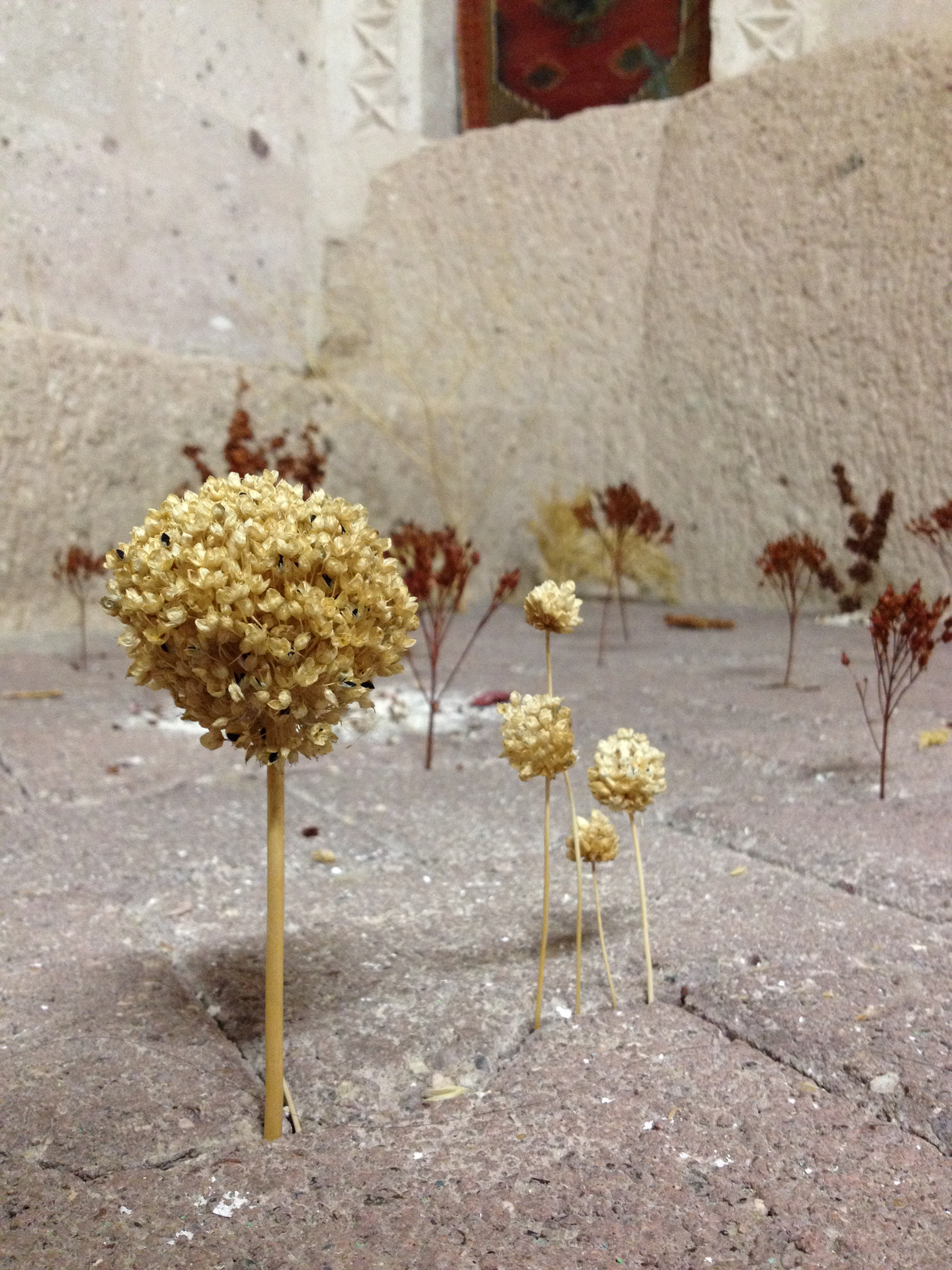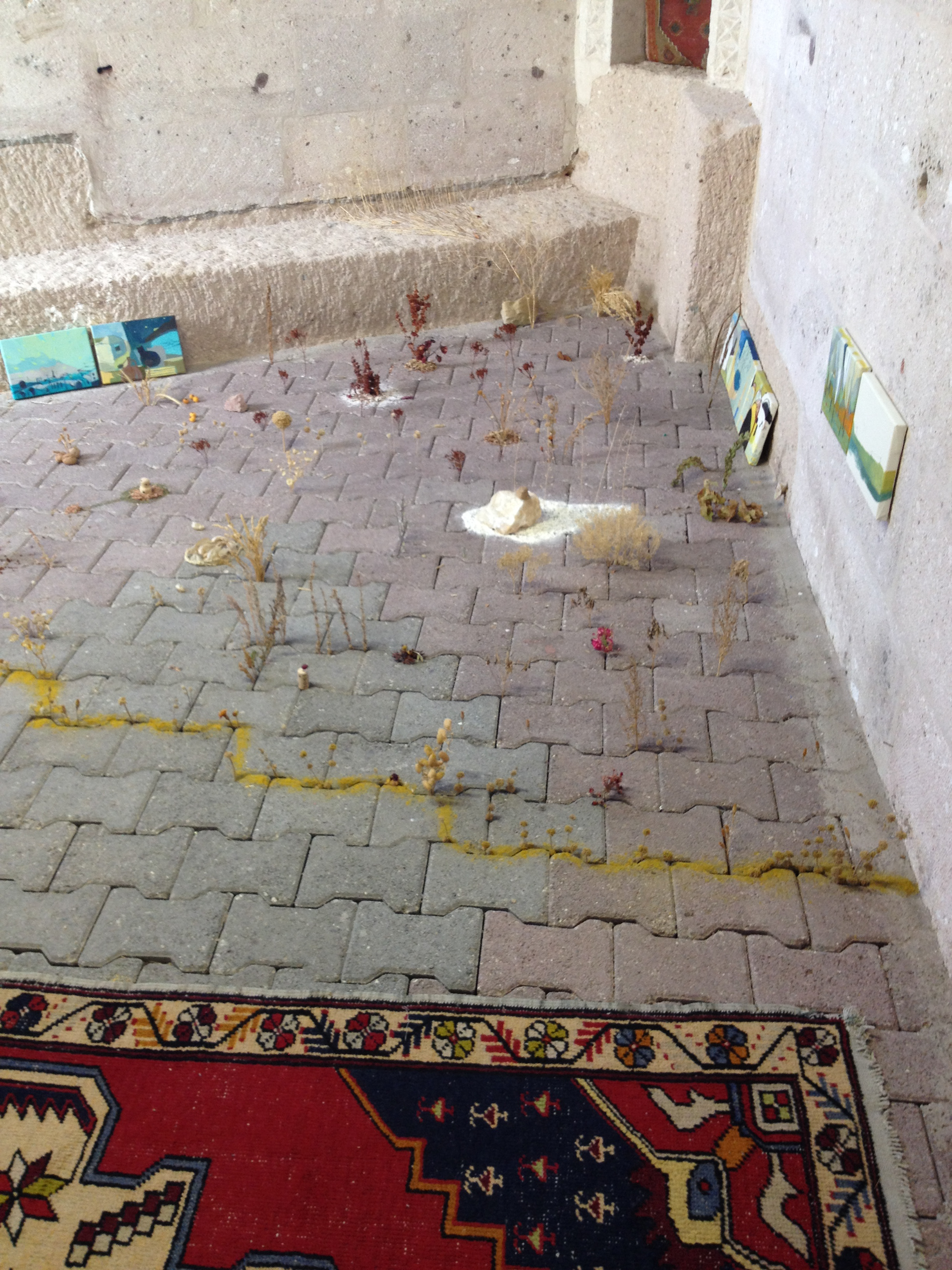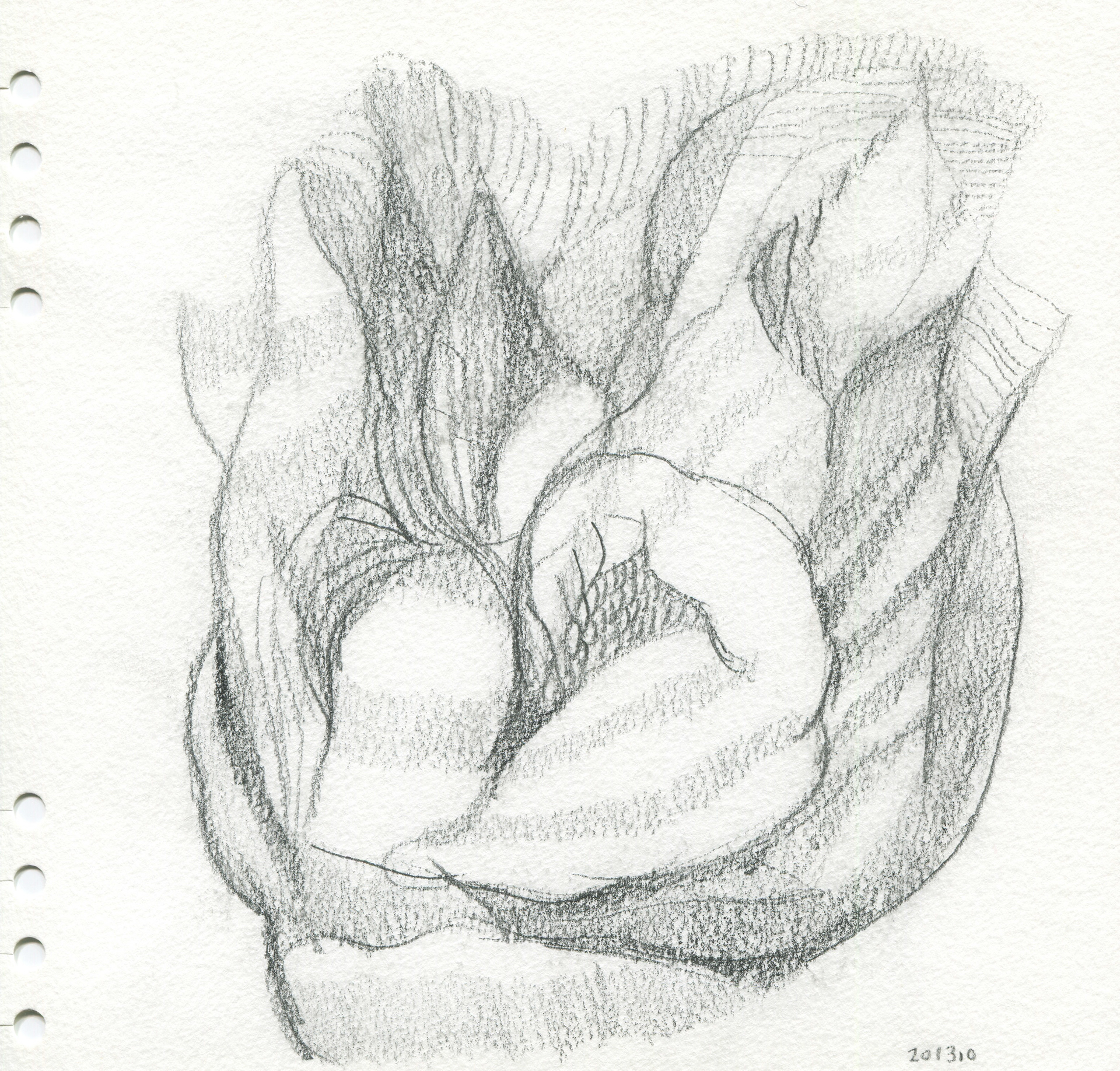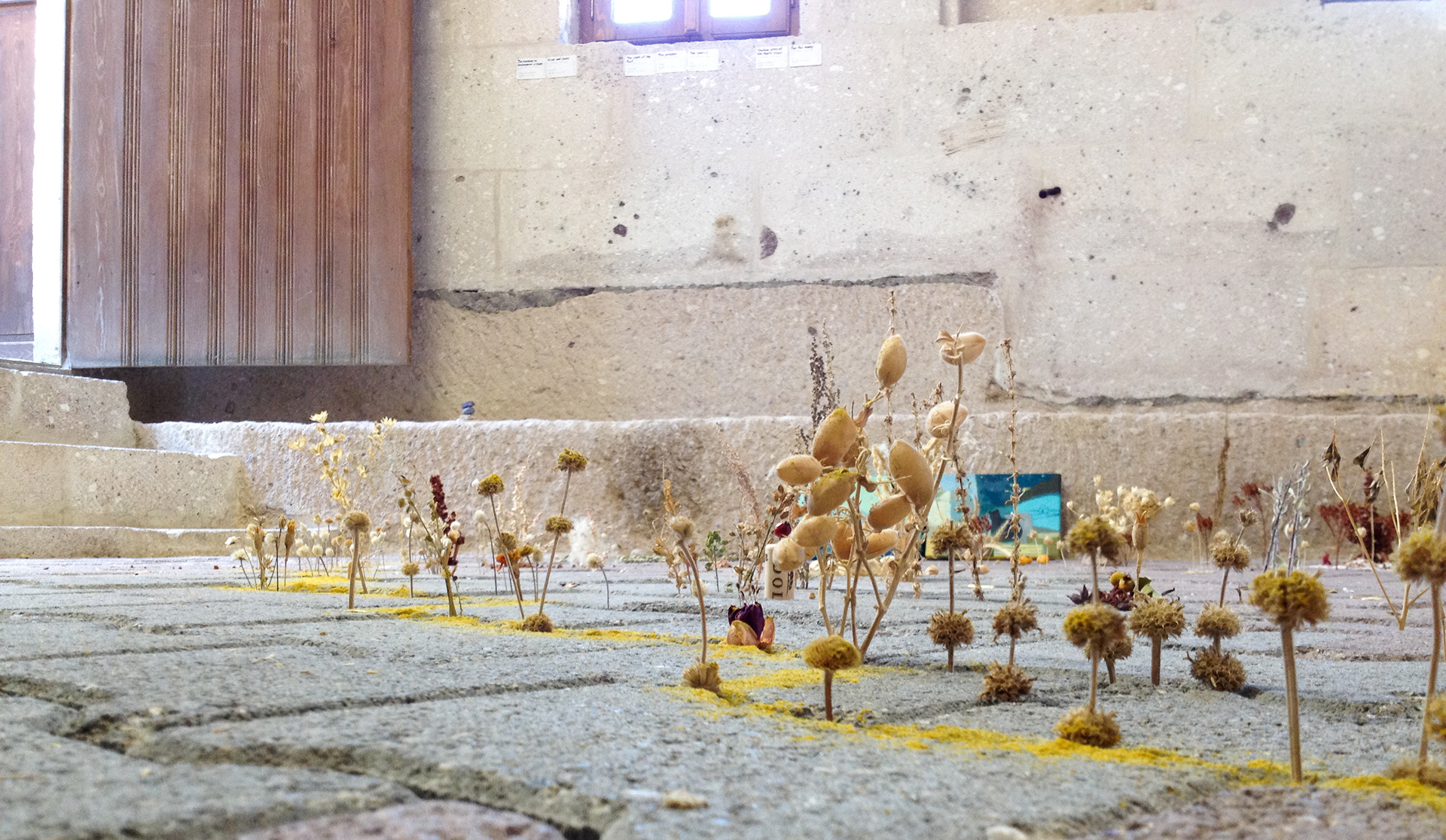關鎖的園
繪畫裝置
土耳其 巴巴楊文化基金會 駐村創作
2013
2013年10月,我於土耳其中部的卡帕多其亞(Cappadocia)進行為期一個月的駐村創作,展開一系列以《舊約聖經》〈雅歌〉第四章第十二節為靈感的作品:「我妹子,我新婦,乃是關鎖的園,禁閉的井,封閉的泉源。」此詩句作為創作的核心意象,引導我在創作過程中思索「關鎖的園」所象徵的純潔、守護與內在的完整性,並與卡帕多其亞原始的火山岩地貌和隱秘的山谷形構出深刻的精神對話。經文中「封閉」的概念,在此也轉化為一種潔淨、保護與靈性專注的象徵。
卡帕多其亞特殊的火山岩地形造就出奇岩林立的地貌,其洞穴建築與自然景觀使其被列為聯合國教科文組織世界文化遺產。在我駐村的秋季時節,整片土地染上溫暖的芥末黃色調,無論是居住的洞穴空間,或是在山谷健行途中所見的景色,都籠罩著一種靜謐且略帶荒涼的氣息。
在每日的山谷行走中,我開始撿拾乾果與乾燥植物,一開始是為防迷路所留下的自然記號,漸漸轉化為創作素材的蒐集。這些植物象徵我與地景的接觸與對話,也紀錄了身體行走的軌跡與感官記憶。我將它們帶回駐村的工作室——一處由洞穴改建的空間,開始在火山岩地板上排列組構,以植物重構我所經歷的山谷與村落地貌。
另外,我以當地市場製成的天然植物粉末,加入地板上的乾燥植物,用來鋪陳色彩與質地,發展成一處以身體經驗為基底、融合地景與時間痕跡的臨時性裝置。這件作品不僅是自然素材的編織,我透過繪畫與場域裝置創作,將這段靈修式的旅程轉化為對個人內在空間的探詢,也是對地方精神與個人記憶的轉譯。
◆
Enclosed Garden
2013, on site installation
In October 2013, I undertook a one-month artist residency in Cappadocia, central Turkey, where I developed a series of works inspired by Song of Songs 4:12 from the Old Testament: “A garden enclosed is my sister, my spouse; a spring shut up, a fountain sealed.” This verse served as both a spiritual anchor and conceptual framework throughout the residency. The notion of the “enclosed garden” symbolizes purity, protection, and interior wholeness—qualities that resonated deeply with the primordial volcanic terrain and hidden valleys of Cappadocia, forming a profound dialogue between text and landscape. The idea of “sealing” in the scripture came to represent not confinement, but sanctity, clarity, and spiritual focus.
Cappadocia’s distinctive topography—marked by towering rock formations and cave dwellings—has been designated a UNESCO World Heritage Site. During my autumn stay, the entire region was bathed in a mustard-hued light, casting a quiet, melancholic atmosphere over both the interior of my cave-studio and the surrounding landscape encountered during daily hikes.
As I walked through the valleys, I began collecting dried fruits and plants—initially as markers to avoid getting lost, but gradually as materials that embodied my physical passage and sensory impressions. These elements became both tactile memories and points of connection with the land. In my cave studio, I arranged them on the volcanic rock floor to map and reconstruct the terrains I had traversed.
Using locally sourced botanical powders from the market, I layered colors and textures over these organic assemblages, developing a site-responsive installation that wove together bodily experience, landscape, and the passage of time. The resulting work transcended simple material accumulation; it became a meditative inquiry into inner space through drawing and installation, and a translation of local spirit into personal memory and spiritual reflection.

